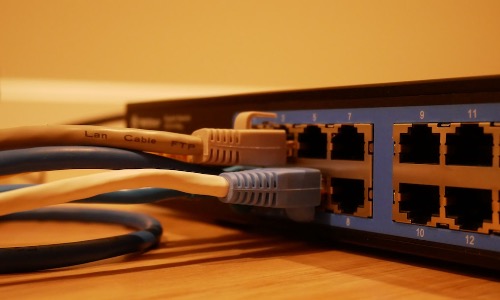After you’ve figured out what ISP you plan to use, the next step is how to connect that incoming internet access to all your devices. That requires a wifi router.
A router in its most basic explanation routes internet traffic. It connects to a modem through one Ethernet port and connects to local devices through either wifi or Ethernet. Older routers were only Ethernet, and while those still exist, most people will want one that has Wifi as well.
Wifi used to be defined by a letter or two (a, b, g, n, etc) but now is defined by a number (6, 6E, 7) and will probably stay that way for the foreseeable future.
Wifi is also defined by a ghz, either 2.4Ghz or 5Ghz. 5Ghz will transfer data faster, but is also a shorter range from the router. 2.4 is older and longer range, and also slower. Some devices can connect both, most modern routers can transmit both, but some devices only work on 2.4Ghz.
When choosing a router, it may be easy to just buy the best, fastest router available. That may be overkill. One one hand, it is future-proofing and the router will last longer, but on the other, if none of your devices can utilize the very fast speed of Wifi 7, why have it at all?
Routers We’ve Used
Over the course of our time in our Allegro, we’ve used three different routers, each one a little better than the last.
When we first moved in, we had a Mobley hotspot from AT&T. I doubt it is available anymore, but at the time, it was a great little device. It could be used to have 100% uptime, unlimited data, and got a pretty decent signal.
Since the wifi on the Mobley was limited, we used a USB cable to connect to a small router that gave us more control and better range of the wifi. That router was something similar to the TP-Link Wifi Router. It allows a hotspot to be plugged in through USB (if your hotspot has a USB OUT), and allows some customization without being too in depth. It’s a starter package though and has limited speed.
Cheap? Yes. Highly functional? Not really.
Next we upgraded to the PepLink Surf SOHO Mk3. It allowed for much more customization, had longer range and better coverage, and was faster. Unfortunately, it appears it’s no longer available on Amazon anymore. We did get it about five years ago and it’s probably outdated by now.
There are other routers from PepLink that do similar jobs, but I liked that the Surf SOHO Mk3 was made for Small business/Home Office and fit our needs well. It was getting outdated though, and that lead to…
Our Current Router setup
I went with something simple to setup, easy to maintain, and still customizable. The Eero Wifi Mesh Router system. We have an original, pre-Wifi 6 setup, but it’s still fast enough for our household.
I like the Eero in that each unit has two Ethernet ports, one can be incoming with one outgoing, or both can be outgoing. They also easily mesh together and come in three packs or single packs, so having your hotspot or modem in the center of the RV with another unit at the front and another at the back will cover the whole RV easily. They are rated to 1,500 sq ft at the smallest, and only go up in coverage, so even one should cover a typical RV. If you have weak spots though, you can simply plug in another Eero router, connect it the wifi, and it’ll receive, boost, and broadcast the signal in the weak spot.
Some notes about Wifi
Some RVs have metal walls on the exterior. Metal is anathema to wifi. It will block wifi like you wouldn’t believe. For this reason, if you want wifi OUTSIDE your RV, you’ll have to have some kind of router somewhere that isn’t blocked by metal. How you do it exactly is up to you, but there are roof exterior models (Winegard ConnecT 2.0 Review and Installation) or put a smaller router in a basement unit or maybe even underneath the RV but somehow protected from the elements and road wear and tear.
When setting up your wifi, change your SSID and your password. Make it something easy to remember, but also hard to guess the password for better security. There’s nothing more annoying than a neighbor connecting to your wifi and using it for purposes not intended by you.
Next up… devices.

[…] Next up… Routers […]